St. Augustine Diagnostics
To help you identify the most common problems people encounter with St. Augustine lawns, I’m assembled the ones I see most often. Scroll through to see if any sound familiar.
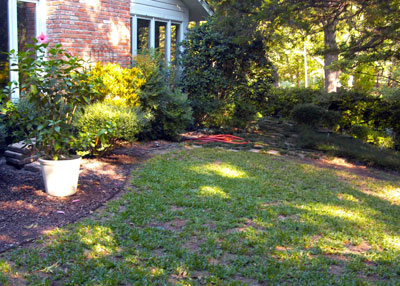
Too Little Sunlight
People have the mistaken idea that St. Augustine needs shade. If that were the case, sod farms would be beneath trees. St. Augustine needs as much sun as it can get, but certainly no less than 5 or 6 hours of direct, mid-summer sun. Trees grow larger and denser with age, and St. Augustine struggles, especially close to the trunks of the trees.
You can try removing one or two low-hanging branches, but don’t spend a lot on thinning your trees. They’ll just grow back and fill in. If you’ve tried replanting new sod and it, too, has failed, it’s time to move on to shade-tolerant groundcovers. (You wouldn’t believe how strongly some people argue with me on this one.)
Drought
St. Augustine needs more water than most of our other lawngrasses (fescue excepted). If you let it get too dry, and especially if you do so repeatedly, St. Augustine will be weak, and it may even die away.
Poor Nutrition
St. Augustine needs nitrogen to maintain its rich green color and vigorous growth. Feed it in early April, early June and early September. Nitrogen promotes gray leaf spot in summer (see later), so avoid applications from mid-June until temperatures begin to drop in September. Most clay soils have excessive amounts of phosphorus (middle number of the analysis), so soil tests usually suggest a high-quality, all-nitrogen fertilizer be added.
Pests (in rough chronological order):
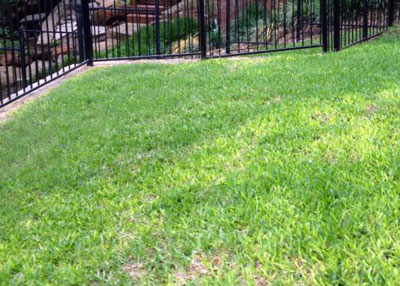
Take All Root Rot (TARR) is a recently identified fungal disease that shows up in April and May. Grass is yellowed and lethargic, even to the point of dying in irregular areas. This disease has become epidemic in recent years. The fungicide Azoxystrobin (sold as the consumer product Scotts Disease-EX and commercial product Heritage) does an excellent job of stopping the spread of TARR.
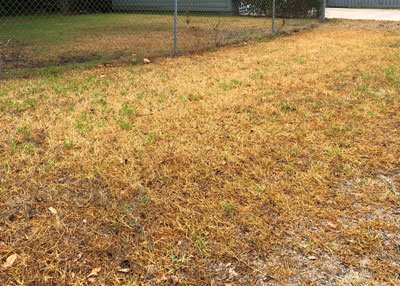
Chinch bugs attack St. Augustine from mid-summer on. First signs will be dried-looking grass that does not respond to irrigation. They will always be in the hottest, sunniest part of the yard, and they will come back to the same places year-after-year. The adult chinch bugs will be BB-sized black insects with irregular white diamonds on their backs. Treat with Merit immediately when chinch bugs are observed.
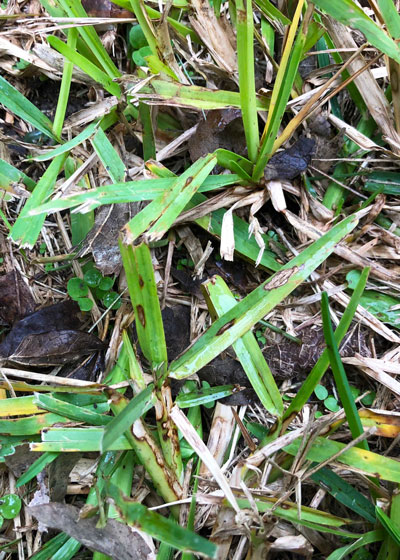
Gray leaf spot is a fungal disease that shows up in mid-summer into early fall. You’ll see diamond-shaped, gray-brown lesions on the midribs of the blades and occasionally on the runners themselves. This disease is most prevalent following applications of nitrogen. In fact, the additional symptoms of gray leaf spot are yellowed leaves that look like they need more nitrogen. But, since nitrogen promotes this fungus, you should avoid applications of nitrogen from mid-June until early September. Labeled turf fungicides will help with current outbreaks, but changing your fertilization schedules will be the best long-term plan of attack.
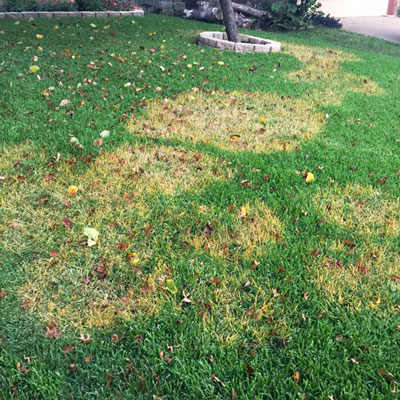
Brown patch is a fungal disease that shows up in fall’s cooler weather, generally October and November. It attacks the leaf blades only, causing the sheaths of the leaves to rot and pull loose easily from the runners. Avoid overnight waterings in fall. Apply a labeled fungicide at first evidence of invasion of the fungus. Affected areas will recover, often greening back up before the first killing freeze. In mild winters and in South Texas brown patch may survive the winter and return in the spring.
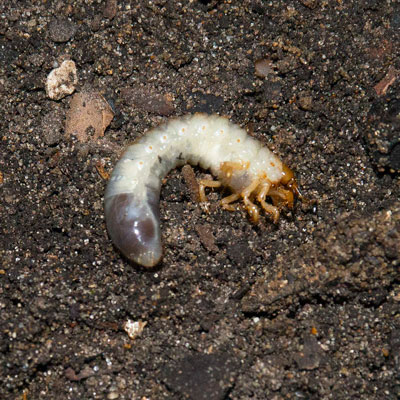
White grub worms are larvae of June beetles. They begin feeding in mid- to late summer, and by October, if they are present in high enough numbers (5 to 6 per square foot), they will make you aware of their damage. Affected turf will pull loose from the turf easily, almost like an old piece of carpeting. Apply Merit in late June to kill the tiny worms just after they hatch.
